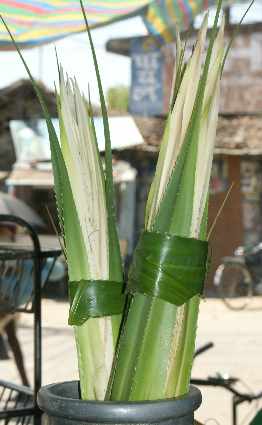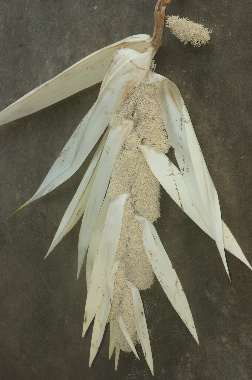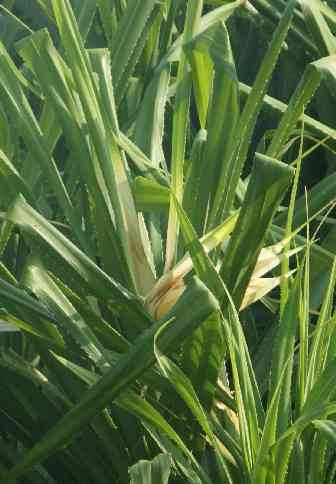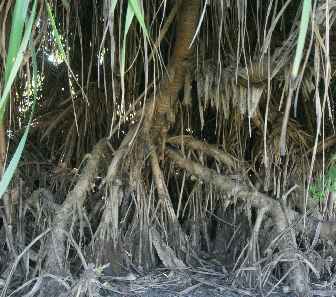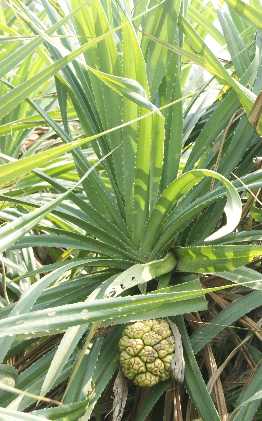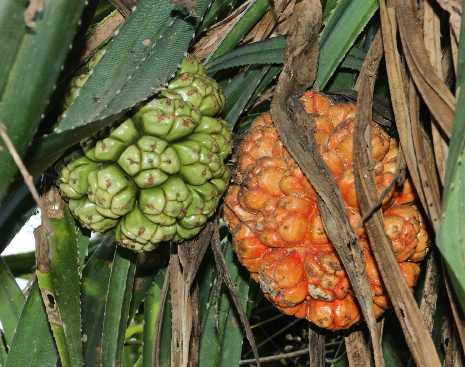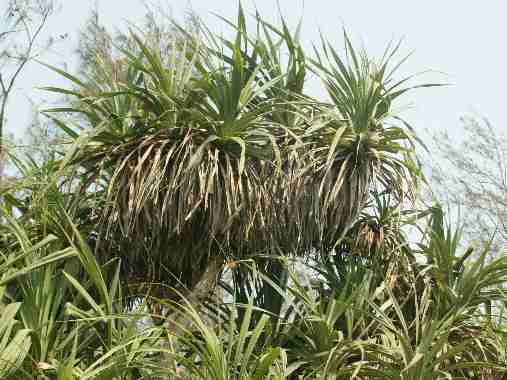
|
| Group of Pandanus palms |
Pandanus water, distilled from male pandanus flowers, is popular in Northern
India and mainly used to flavour the
phantastic sweets Indians can prepare from so commonplace ingredients as milk
and sugar. The most important milk products for sweets are evaporated
milk and a type of Indian cheese: By boiling milk, one first obtains a
viscous liquid called rabadi [रबडी];
boiling further, one arrives at a sticky, aromatic mass known as
khoya [खोया].
Indian cheese is obtained by precipitating milk protein from boiling milk
by the addition of some acid; in its raw form, it is called
chena oder chhena [छेना]
which can be made into a compact product called paneer [पनीर]
that is chiefly used for savoury dishes.
Chena may be replaced by a neutral brand of cottage
cheese; instead of khoya, I usually employ a thick mixture
of milk and dry evaporated milk.
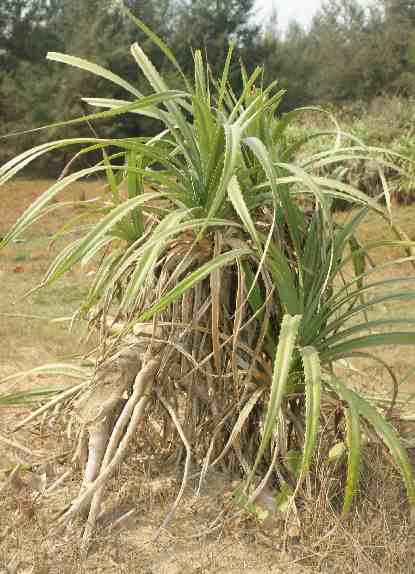
|
| Pandanus plant |

|
| Pandanus tree |
Some common Indian sweets, especially attributed to Bengali cuisine but available all over the country, are ras gulla [रस गुल्ला] (balls of chena and flour cooked in syrup), gulab jamun [गुलाब जामुन] (fried balls of khoya and flour served with syrup) and ras malai [रस मलाई] (chena balls in a rich, creamy rabadi sauce). In order to not waste the delicate scent, pandanus water is sprinkled over the balls just before eating; only the ras gulla are often let steep in pandanus-flavoured syrup for longer time, but in that case it’s important to have the container tightly closed. As an alternative, saffron may be used to flavour the milk-based ras malai sauce, but for the other recipes, saffron wouldn’t work so well.
Another application are the highly aromatic rice dishes the Moghul cuisine is famous for (biriyani, see cardamom). The most elaborate recipes sometimes call for kewra water to be sprinkled over the rice just before serving. In Central Asia and in the Gulf countries, where pandanus is unknown, similar rice dishes are often perfumed with rose water, which is also delicious.
Although pandanus trees grow almost everywhere in tropical Asia, kewra water
is still mainly a Northern Indian flavouring that is not used anywhere else.
Indian emigrants, however, have taken their likening for this flavour with
them, and have transported pandanus trees to other tropical areas.
In Western cooking, kewra water makes a fine alternative to the flower
essences already in use, like rose or
orange.
